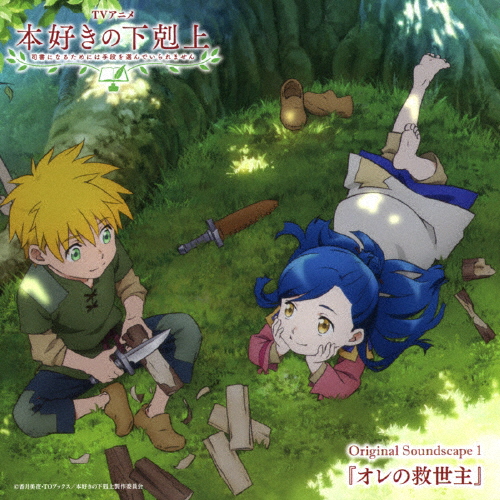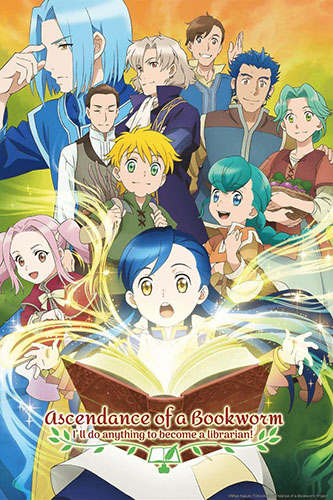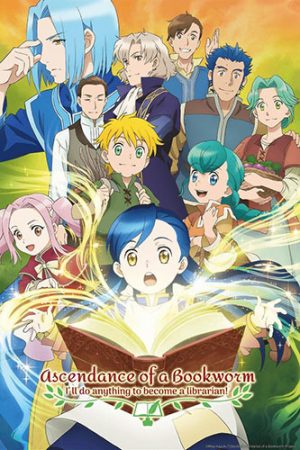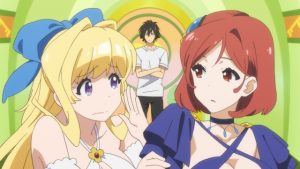
Honzuki no Gekokujou: Shisho ni Naru Tame ni wa Shudan wo Erandeiraremasen (Ascendance of a Bookworm) is an anime adaptation of a light novel. Airing in late 2019, this humble show gained a positive reception, leaving its audience astounded with its wholesome story and fresh take on isekai stories.
With its childish characters and simple premise, it might seem unintuitive what Bookworm does effectively--what makes it stand out. However, by analyzing its writing and seeing how the author decides how to use conventions, the reason becomes clear.
Before diving into the show, I will first discuss some conventions in isekai. For this article, by informing readers of common aspects of isekai, I hope to enlighten how Ascendance of a Bookworm crafts its graceful story.
Context and Role Inheritance
Isekai (異世界) is a popular subgenre of fantasy where a protagonist is transported to another world. The means through which they are transported can vary, but commonly death or teleportation is used.
Most animated isekai originally came as light novels from a website called Shōsetsuka ni Narō (Let’s Become a Novelist). A few examples would be Arifureta, KonoSuba, and The Rising of the Shield Hero. Thus, when we are referring to isekai, we will be referring to stories originating from this website.
Ascendance of a Bookworm, like several of its contemporaries, utilizes popular conventions. However, by making conventions integrate naturally--feel necessary--much of Bookworm’s charm is revealed through careful execution.
As standard, after Mototsu Urano’s death, she is transported to another world. By chance, she is revived, not as herself, but as a pre-existing character, Myne. This kind of revival is not atypical.
For example, being reborn as an existing character is popular within otome (game) isekai. Otome games (or “maiden” games) are story-centric video games aimed primarily at women where the goal is usually to pursue the heroine’s romantic interest.
Otome isekai commonly feature a Victorian-esque or medieval fantasy setting where one’s social position is inherited through blood. Thus, being reborn is a roll of the dice. Just like how one can’t choose their parents, one can’t choose their social rank. It’s common in these settings that the “blessing” of being reborn can come with its burdens. A protagonist’s death can be unfair, but furthermore, so can life.
Heroines of these stories typically start with a social burden. They can revive as villains, be born into poor families, or turn into social outcasts. The privilege of being reborn comes with its own challenges, and authors will justify a character’s rebirth through their actions. Even if these heroines are outsiders, they must work to become an integral part of the story.
From the Author’s Perspective: Utilizing Conventions
Blessings come in all forms. In the anime KonoSuba God’s Blessing on This Wonderful World, Kazuma is granted the subgenre’s iconic blessing. However, unbeknownst to him, his wish to bring the goddess Aqua with him is more a curse than a blessing. Aqua’s unbelievable ineptitude turns Kazuma’s fantasy world into a nightmare.
In Re: Zero -Starting Life in Another World-, the protagonist is a former NEET. His lack of social awareness and life experience burdens him in the next world. After he leaves his world (the conditions are unknown at first), he brings a set of expectations. To him, his revival is a chance to start anew. He will become more than what he was before. The problem is his second chance becomes his third, then his fourth. Reviving quickly becomes a curse.
Both titles are self-aware isekai. They critique the accepted norms by parodying or synergizing conventions. Thus, death is not a plot device in Re: Zero. It is an integral part of its story. The lackluster abilities of Konosuba’s cast is not by whim. It’s a reversal of its contemporaries. It pokes fun at the absurd strength of isekai protagonists through a contrast.
Ascendance of a Bookworm isn’t a parody or satire, but its writing does address isekai conventions. By streamlining its writing, Bookworm shows how methodically using conventions can still produce a fresh story. Thus, let’s discuss how Bookworm’s form of revival (the inheritance of a new role) is helpful for the writer.
First, this type of revival establishes a backstory through one’s past. By inheriting a new role, the protagonist recalls their world’s history and relationships. This allows exposition to work easily into the story. No other character has to explain things to the protagonist. It simply is in their head.
Second, once the main character has been revived, the cast will interact with them organically. These characters will treat them as they did before, but with a twist. The protagonist is now acting out this new role. This unique dynamic will be further discussed in parts 2 and 3.
Lastly, reviving into another role makes it easier to write introductions. By having the protagonist usurp their new role, they are dropped into the world as an insider--someone who already belongs. Taking full advantage of this can help a story’s pace, pushing readers and viewers into the heart of the story.

Final Thoughts
As genres become more familiar, conventions become a functional tool within an author’s kit. By properly applying conventions into the story--integrating them as a necessary part of the work--function begets form, creating a story that feels both fresh and natural. In the next article, I’ll go into details of how Ascendance of a Bookworm molds its writing through a graceful application of conventions.
Recommended Post
Best Isekai Anime of 2019
Recommended Post





